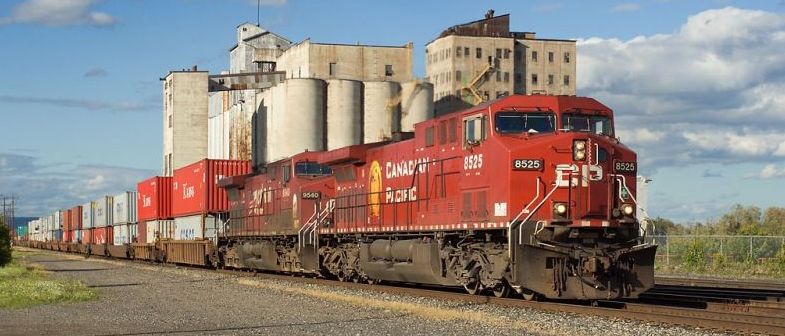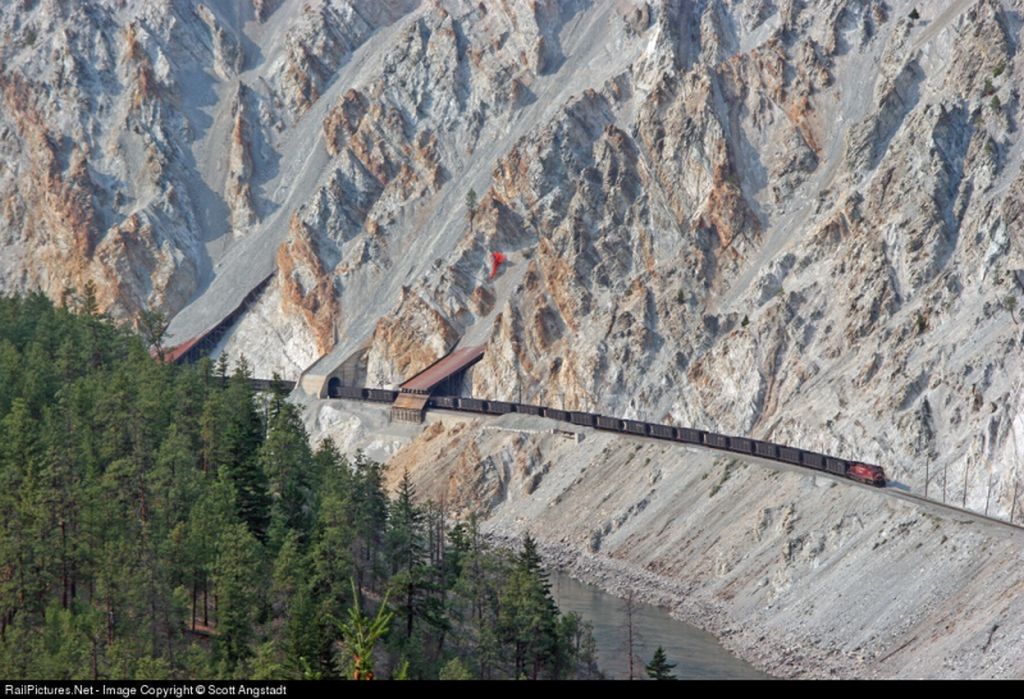
Train Addiction Help Line: 1.866.840.7777
PWRS - N Scale - CP Rail Bathtub Coal Cars Black with Multi Mark Set 1 (Road numbers 1-12) (SKU 1-N1140-12A)
The Canadian Pacific rebuilt its trackage from Cranbrook north to its main line at Golden to accommodate its new concept of heavy coal trains. At the same time, a new coal port or "super port" was built south of Vancouver at Roberts Bank and a connecting rail line was constructed across the Fraser Valley to reach the new site. The coal port was built just north of the B.C. Ferries terminal at Tsawwassen.
A very important part of the concept was that the trains should operate as units (or "unit trains") and not be broken up into individual cars at yards in the way traditional freight trains were handled by the railways. Unless a car was taken out of a train for scheduled maintenance, it stayed in the train from one cycle to another from the mine to the coast and back to the mine, without ever being uncoupled.
Canadian Pacific ordered hundreds of new "bathtub" coal cars for the new trains. These cars, each with a capacity of 106.7 tonnes (105 tons), were designed to be unloaded at Roberts Bank by a rotary dumper in a non-stop operation. Cars were equipped with couplers that permitted them to be turned upside down while being moved through the dumper. With this system, an entire train could be unloaded in as little as two hours. At the mines, with high speed loading equipment, a train could be loaded in two and a half to three hours.
New 3000-horsepower locomotives were built for the trains. These engines were equipped for remote control operations so that an engineer in the leading diesel could control "slave" locomotives by remote control far back in the train. Trains left the mines with four locomotives: two at the front and two about two-thirds of the way back in the train. But at Golden, where the trains started their long climb over the Selkirk Mountains through Rogers Pass, and at Beavermouth (later Rogers) where the grade increased, extra diesels had to be added until as many as 10 locomotives were required to pull and push an 88-car train over the toughest part of the mountain grades in Rogers Pass. Once the trains were over the mountains, the extra locomotives were removed at Stoney Creek, Revelstoke and Chase as they were no longer needed, until only the original four remained for the rest of the trip to the coast. Operations of the unit trains began in April 1970 and continue today. Coal production in the Crow increased rapidly.
At first, Canadian Pacific (CP Rail) used diesel locomotives from the Montreal Locomotive Works on the coal trains. These were replaced in the 1970s with General Motors diesels called SD40-2s of which the railway eventually owned about 500. These locomotives each generated 3000 horsepower.
Most recently, these diesels have been replaced by new locomotives from General Electric. The new GE diesels each produce 4400 horsepower and have advanced alternating-current traction systems which give them immense power. Three of these locomotives can handle a loaded coal train from the mines to the coast and back.



$264.00 US